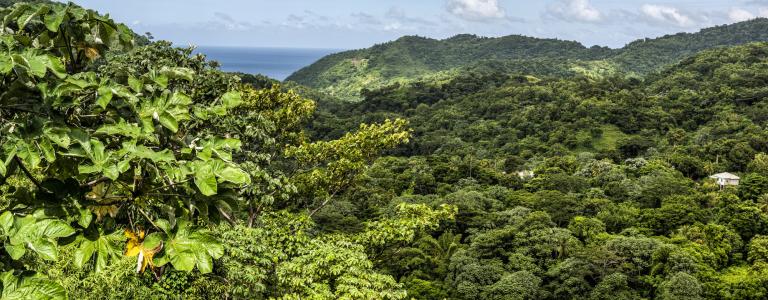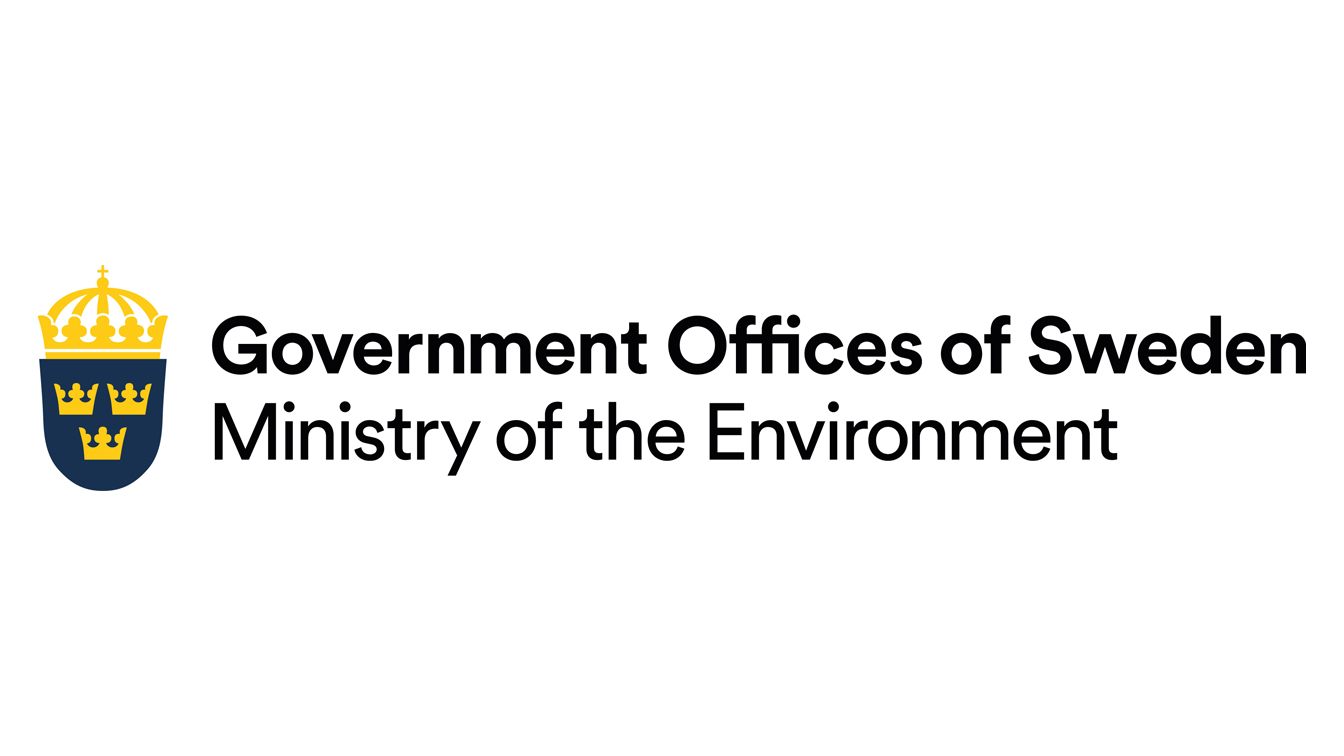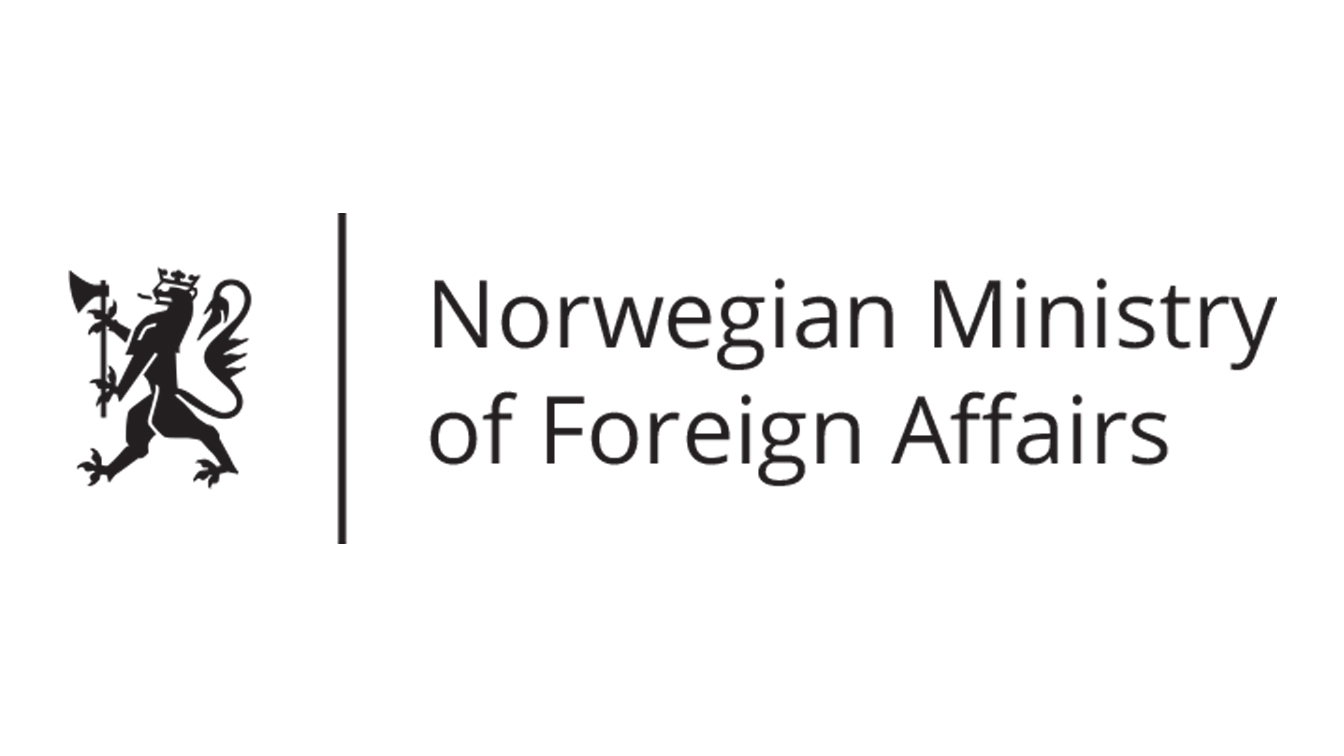The Roots of Forest Loss and Forest Governance
Still Only One Earth: Lessons from 50 years of UN sustainable development policy
Despite their obvious value, forests have been steadily razed for decades to make space for agriculture and animal grazing, and to obtain wood for fuel, manufacturing, and construction. However, if lessons from past failures on reducing deforestation can be learned, forest protection could play a major role in reversing both climate change and biodiversity loss. (Download PDF) (See all policy briefs) (Subscribe to ENB)
Forests are synonymous with life on Earth. They are at the root of our oxygen, habitat, food, wood, identity, and culture. It was under a tree that Isaac Newton had his “Eureka!” moment. In the shelter of a fig tree, the Buddha achieved enlightenment.
Humans have destroyed much of the world’s forests, but not for lack of attention. The world has long been aware of forest loss and its consequences. Alexander von Humboldt wrote extensively about the issue at the turn of the 19th century and forest concerns were still central when global environmental governance began to emerge almost two centuries later.
At the United Nations Conference on the Human Environment in Stockholm, Sweden, in 1972, forests were linked to a number of principles in the final declaration. For example, Principle 2 calls for natural resources, including flora and fauna and especially representative samples of natural ecosystems, must be safeguarded for the benefit of present and future generations. In the Action Plan, several recommendations pertained to building and sharing information about forests, their management, surveillance, and associated environmental considerations.
In the fifty years since Stockholm, our awareness and knowledge of forests have grown, along with a proliferation of forest governance initiatives. Sadly, forest loss continues and the challenge to protect the Earth’s remaining forests has only become greater.
The State of Global Forests
Forests cover approximately 31% of global land area, about 4.06 billion hectares. About a third are primary forests, areas with naturally grown or regenerated native forests where humans have not significantly disturbed the ecological processes. Most terrestrial biodiversity is found in the world’s forests, from the boreal forests of the north to tropical rainforests closer to the equator. Together, they hold more than 60,000 tree species and provide habitat for 80% of amphibians, 75% of bird species, and 68% of mammals (FAO & UNEP, 2020).
Forests also play a key role in our climate system. They produce oxygen and regulate climate, by storing approximately 861 gigatonnes (Gt) of carbon while sequestering 15.6Gt of carbon dioxide equivalents (CO2e) on average each year (WRI, 2021).
The importance of forests extends well beyond their biophysical properties. About 300-350 million people live within or adjacent to dense forests, depending on them for subsistence and income. Roughly a third of humanity has a close dependence on forests and forest products, including for food or fuel (FAO & UNEP, 2020). More intangibly, forests are important sites of culture, spirituality, and recreation.
An estimated 420 million hectares of forest—the area of India and Portugal combined—have been lost to deforestation since 1990.
The total value of forests is impossible to quantify, and there are many aspects of forests that are simply unfathomable. However, analyses that do attempt to determine the value of forests inevitably reach staggering numbers, such as the USD 150 trillion suggested by Kappen et al. (2020).
For all of forests’ biodiversity, climate, cultural, recreational, spiritual, and monetary value, the trends are worrying. Approximately 420 million hectares of forest were lost between 1990 and 2020 (FAO & UNEP, 2020), with almost 26 million hectares lost in 2020 alone (WRI, 2021). Much of this is temporary forest loss due to plantation harvesting, wildfires, or rotational agriculture that will naturally regrow, but over a quarter is permanent forest loss—deforestation.
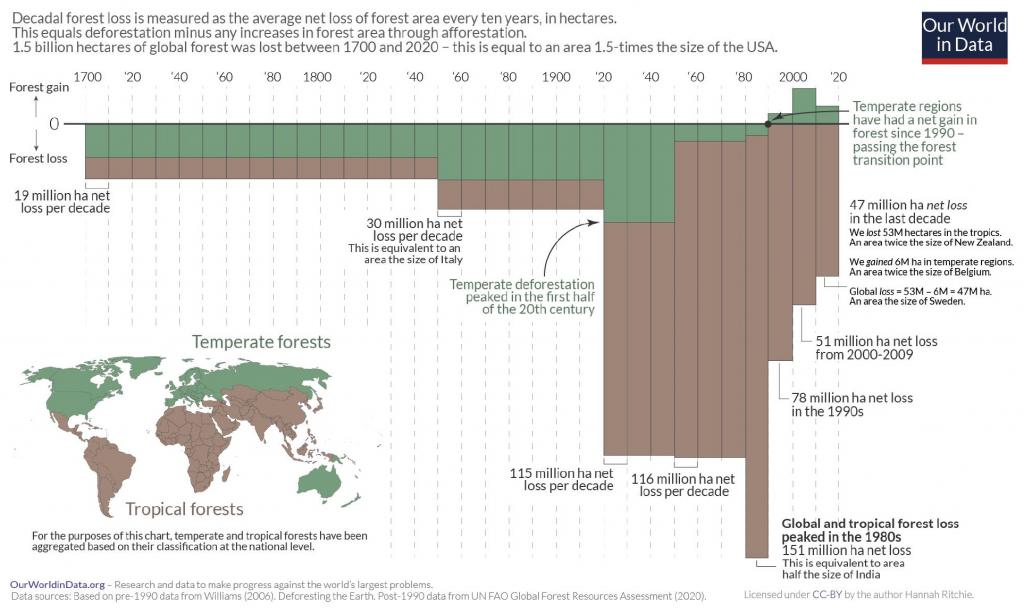
Most deforestation occurs in tropical forests, which peaked during the 1980s at over 15 million hectares per year and continued at 4.7 million hectares per year during the 2010s. (See Figure 1.) Between 2019 and 2020, 4.2 million hectares of primary tropical forest were lost—an area the size of Denmark—resulting in the release of 2.64Gt of carbon-dioxide emissions (WRI, 2021).
The predominant driver of tropical deforestation is conversion of primary forest to agriculture or tree plantations. However, the expansion of pasture for beef production is the greatest driver, accounting for about 40% of deforestation, with Latin America representing the largest geographic region of deforestation followed by Asia and then Africa. (See Figure 2.)
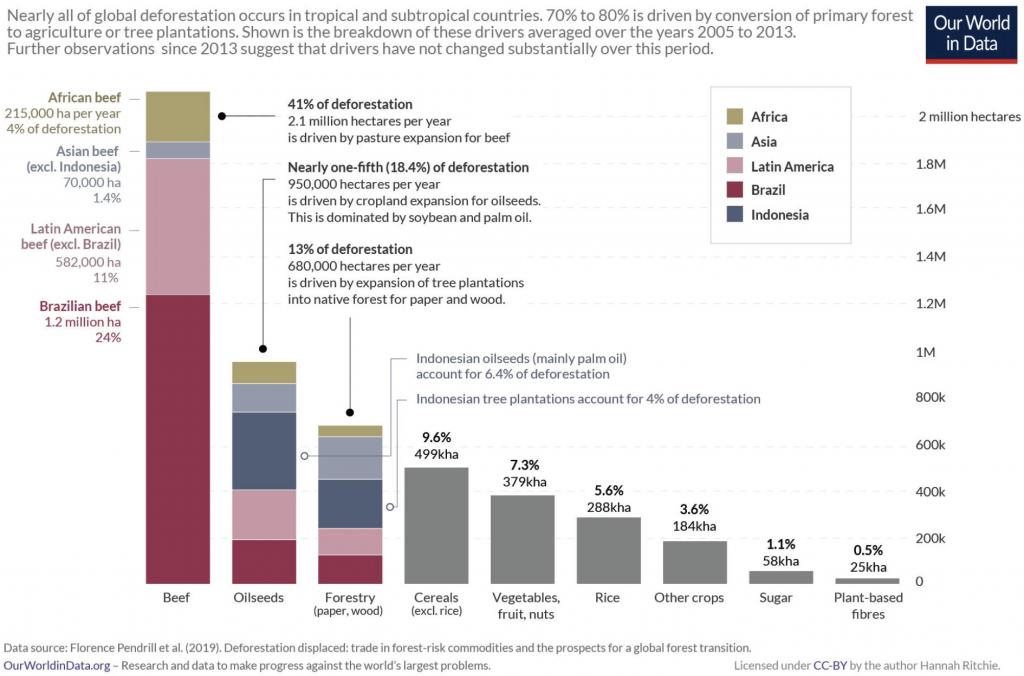
Global Forest Governance
The Food and Agriculture Organization of the United Nations (FAO) Conference, which first met in 1945, was the principal global forum for the discussion of international forestry issues from its establishment until 1971, when the FAO Committee on Forestry was established to review international forestry problems and advise on the FAO’s work.
At the 1992 UN Conference on Environment and Development (Earth Summit), forests evolved into one of the most divisive issues on the agenda. The exchanges were often acrimonious and became a striking symbol of the North-South divide. A Swedish proposal for a forest convention was strongly resisted by several developing countries, who saw it as a ploy to limit the use of tropical forests for economic development. (Engfeldt, 2009, p. 183). Disagreement centred on whether forests are a common good or a sovereign national resource as well as on financing responsibilities for forest protection (Humphreys, 2005). After lengthy negotiations, delegates did not adopt a treaty and were only able to agree on a set of Forest Principles and a chapter in Agenda 21 on combating deforestation.

Following the Earth Summit, the FAO, national governments, and non-governmental organizations (NGOs) held a number of international meetings on forests in an attempt to rebuild some of the trust that was lost in Rio. By 1995, governments were ready to resume discussions and agreed to establish the Intergovernmental Panel on Forests (IPF). This was superseded by the Intergovernmental Forum on Forests (IFF) in 1997, and then a more permanent body was created in 2002: the United Nations Forum on Forests (UNFF).
While a forests convention has remained elusive, the UNFF has been a forum for continued intergovernmental dialogue on forest issues. UNFF established the Collaborative Partnership on Forests, a partnership of 14 major forest-related international organizations, institutions, and convention secretariats. In 2007 the UNFF negotiated and the UN General Assembly adopted the United Nations Forest Instrument, which provides countries with a framework for promoting sustainable forest management.
Ten years later, in 2017, the UNFF adopted—and the UN General Assembly endorsed—the UN Strategic Plan for Forests 2030. This plan serves as a framework to promote sustainable forest management and the contribution of forests and trees outside forests to the 2030 Agenda for Sustainable Development. At the heart of the Strategic Plan are six Global Forest Goals and 26 associated targets. The Goals encompass and build on the foundation of the four Global Objectives on Forests of the United Nations Forest Instrument.
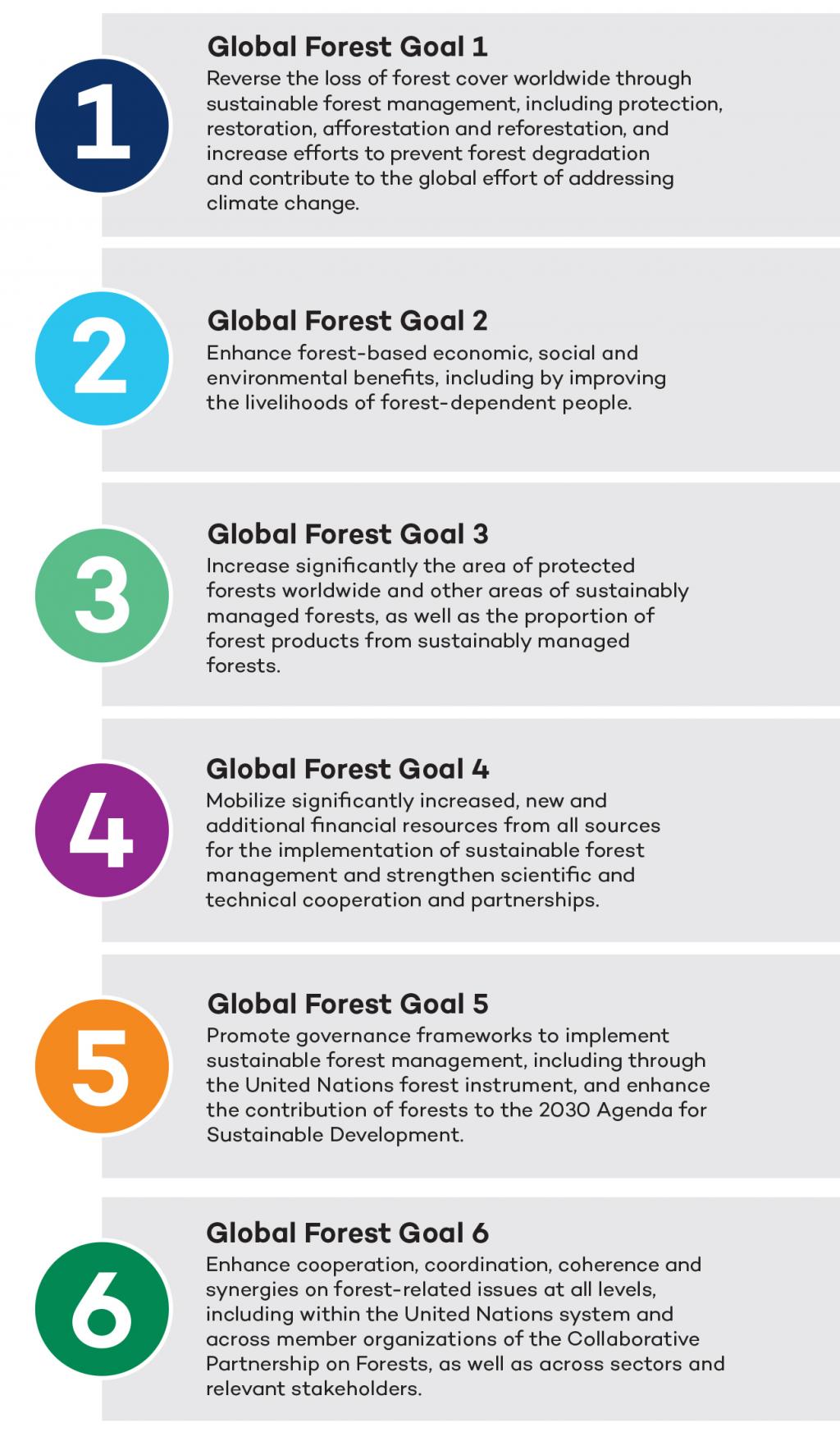
Working in parallel to this developing UN forest system has been the International Tropical Timber Organization (ITTO), created in 1983 to promote the sustainable management and conservation of tropical forests and the expansion and diversification of international trade in tropical timber from sustainably managed and legally harvested forests.
The United Nations Framework Convention on Climate Change (UNFCCC) became a major site of forest governance with the evolution of the Reducing Emissions from Deforestation and Degradation (REDD) since 2005 and forest projects under the Clean Development Mechanism. More recently, forests have been in the spotlight through the rise of “nature-based solutions” climate discourse. Nature-based solutions include planting trees and restoring forested land, which can reduce climate change by capturing carbon dioxide and sequestering it in plants, soils, and sediments. The Convention on Biological Diversity has its own work programme on forest biodiversity.
The pledge at the Climate summit to end deforestation by 2030 is a marker that the importance of nature for climate stability is understood at the highest levels internationally.
This governance system for forests has not turned the tide on deforestation. However, it continues to evolve and has become more polycentric with the emergence of private governance initiatives that focus on three key trends in forest governance: deforestation commitments, carbon offsets, and forest restoration.
Deforestation Commitments
One important approach used to help protect forests is through commitments to eliminate deforestation. The most recent example was at the 26th meeting of the UNFCCC Conference of the Parties (COP 26) in November 2021. The Glasgow Leaders Declaration on Forest and Land Use, under which 141 countries accounting for 91% of global forests committed to eliminate deforestation by 2030. The declaration was accompanied by additional financial commitments to support implementation, including over USD 15 billion in donor funds and USD 7 billion from the private sector (Government of the UK, 2021).
Commitments to stop deforestation are not new, however. Forty countries and 56 corporations pledged in the 2014 New York Declaration on Forests to halve natural forest loss by 2020, and strive to end it by 2030. The 2030 Agenda for Sustainable Development’s Sustainable Development Goals have a target (15.2) to halt deforestation by 2020.
Corporate pledges to eliminate deforestation go back even further. In the 2000s, activists drew attention to tropical deforestation linked to commodities such as palm oil. In response, in one of the first major corporate deforestation commitments, Nestlé committed in 2009 to ensure none of its products were linked to deforestation (Poynton, 2014). In 2010, the Consumer Goods Forum, which represents over 400 global consumer goods companies, pledged to reach net-zero deforestation by 2020.
While it is clear net-zero deforestation has not been achieved, various private initiatives have emerged to facilitate compliance, including certification schemes by organizations such as the Rainforest Alliance, Forest Stewardship Council, and Roundtable on Sustainable Palm Oil. They aim to give consumers and governments confidence that forest products or other commodities potentially associated with deforestation have been sustainably produced. The schemes vary in makeup and strictness, from those run by industry players, to purely independent NGO-run schemes, and mixed models in between. This has led to concerns about “forum shopping” for the lowest set of standards.
Research into the effectiveness of supply chain deforestation commitments has found they are often poorly implemented but, if properly executed, can make a measurable impact. However, as Lambin et al. (2018) highlight, they are generally insufficient to end deforestation, particularly against the global demand for commodities. Initiatives can be undermined by lack of implementation and accountability; only moving deforestation rather than stopping it; and unintended consequences on local communities, such as locking out smallholders who may lack the resources to fulfil compliance or certification procedures from market access. Supportive government policies are needed to help address these challenges.
Forests, Net-zero, and the Drive for Carbon Offsets
The Paris Agreement on climate change established an agreed temperature goal for limiting global warming to 2ºC, or preferably 1.5ºC, above pre-industrial levels. Key to achieving this goal is the timing of when emissions reach “net-zero”—the point at which any ongoing emissions are balanced by removals from the atmosphere.
There has been a rush of attention to the removals part of this equation. While there is significant ongoing work on new technologies to remove carbon dioxide from the atmosphere such as direct air capture, trees and forests offer the most widely available, affordable, and proven method. Countries are interested, but corporations are also looking to meet their own voluntary emissions reduction and net-zero targets.
Net-zero has become a powerful marker for companies wanting to present themselves as doing their part to combat climate change. In turn, the voluntary carbon market emerged with companies looking to offset their emissions and a number of certification bodies stepped in to verify tradeable credits such as Verra, Plan Vivo, and the Gold Standard. Forest projects are accounting for an increasingly greater share of total voluntary carbon market transaction value, reaching 64% in 2020 (Donofrio et al., 2021). Demand is only likely to increase further, including from the aviation industry’s Carbon Offsetting and Reduction Scheme for International Aviation (CORSIA) program, which aims to offset all growth in international aviation emissions.
Forest carbon projects have been the subject of significant controversy, however. Some have been criticized for their effectiveness, in terms of the robustness of the accounting methodology for recording emissions removals and their permanence. Other researchers and activists have focused on potential negative effects, such as the development of monoculture tree plantations that lack biodiversity and have a negative impact on the rights of Indigenous and local communities, including accusations of land-grabbing.
The integrity of Paris Agreement carbon markets remains to be seen, but forest projects are expected to feature prominently. In 2019, several countries agreed to the San José Principles for High Ambition and Integrity in International Carbon Markets as a voluntary set of commitments to the highest standard in international carbon market transactions. The rubber will soon hit the road for such commitments.
Biodiversity and Forest Restoration
Another dynamic in forest governance relates to growing concerns about biodiversity loss. While climate change has achieved a dominant position as the present day’s apex environmental challenge, the alarm has also sounded about the separate, but related, global biodiversity crisis.
This focus has led to renewed efforts around the protection and restoration of forest habitats. Importantly, the focus on biodiversity leads to a different set of optimizing factors than a narrow climate lens. The prioritization of carbon sequestration has led to the expansion of fast-growing monoculture plantations. While good for the climate in the short-term, this type of forestry does little to solve the biodiversity crisis.
We cannot protect the Earth’s biodiversity without protecting our forests. They harbour most of the world’s terrestrial biodiversity and support food security, jobs, and livelihoods for millions of people.
Biodiversity thrives in more natural, diverse forests habitats, especially the complex primary forest systems in which it evolved. While it is difficult to try and recreate these habitats with plantations, land close to native seed sources can often be left, protected, and supported to regenerate forest ecosystems naturally. This is a key part of the logic behind the rewilding movement and initiatives such as the Bonn Challenge, which seeks to bring 350 million hectares of land into restoration by 2030.
Of course, protecting existing biodiversity can be even more powerful than trying to restore it. Protecting the immense biodiversity of forests is part of the drive behind a revitalized international movement to expand the planet’s protected areas. Momentum has been growing behind the “30x30” initiative, which aims to have 30% of the world’s land and 30% of the world’s oceans designated as protected areas.
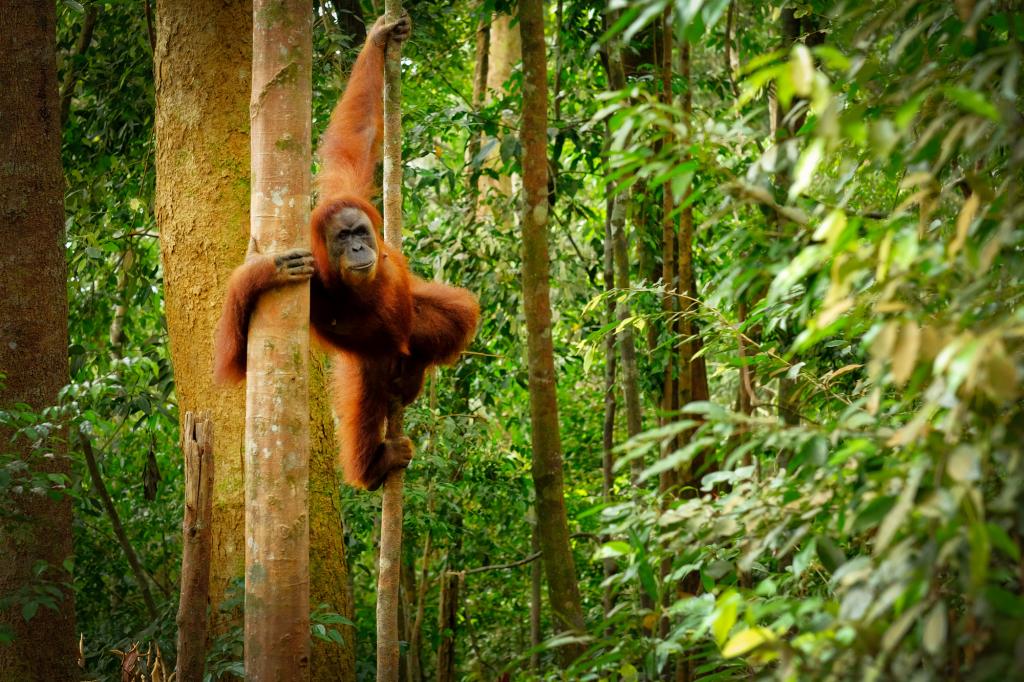
Biodiversity also draws attention to the rights of Indigenous Peoples. Indigenous-held lands cover 25% of the world but contain 80% of the world’s biodiversity, much of it in forests. Indigenous Peoples and knowledge can play an important role in ensuring effective forest protection for biodiversity and other outcomes. There has also been some tension between Indigenous advocates and nature protection efforts such as the “30x30” initiative, which has been criticized by some as threat to Indigenous Peoples’ rights that could see many evicted from their land, replicating colonial legacies of Indigenous dispossession (Mukpo, 2021).
Fighting for the Future of our Forests
In the 50 years since the Stockholm Conference, a forests convention remains elusive, but global attention to the importance of protecting and restoring forests has never been greater. Three important lessons can illustrate the way forward.
The first is to treat and value forests holistically. Humans need to appreciate forests’ multiple environmental, social, and cultural benefits, along with their intrinsic value. Forests play a key role in addressing multiple pressing issues, including climate change and biodiversity loss, while providing homes and livelihoods to millions of people around the world.
Buddha’s words: A tree is a wondrous thing that shelters, feeds, and protects all living things. It even offers shade to the axmen who destroy it.
A second lesson is that enforcement and political will is needed at all levels. The international community has repeatedly failed to achieve past commitments to eliminate deforestation. With a new high-profile platform of commitments from both governments and the private sector emerging from COP 26, the world cannot afford to fail again. Perhaps the most successful recent example of political will was in Brazil in the mid-2000s and early 2010s when it reduced deforestation by two-thirds despite high commodity prices. Although this trend was reversed under the Bolsonaro administration, at the time, strong government policies, reinforced enforcement measures, and concerted pressure from civil society were among the keys to success (Boucher et al., 2013).
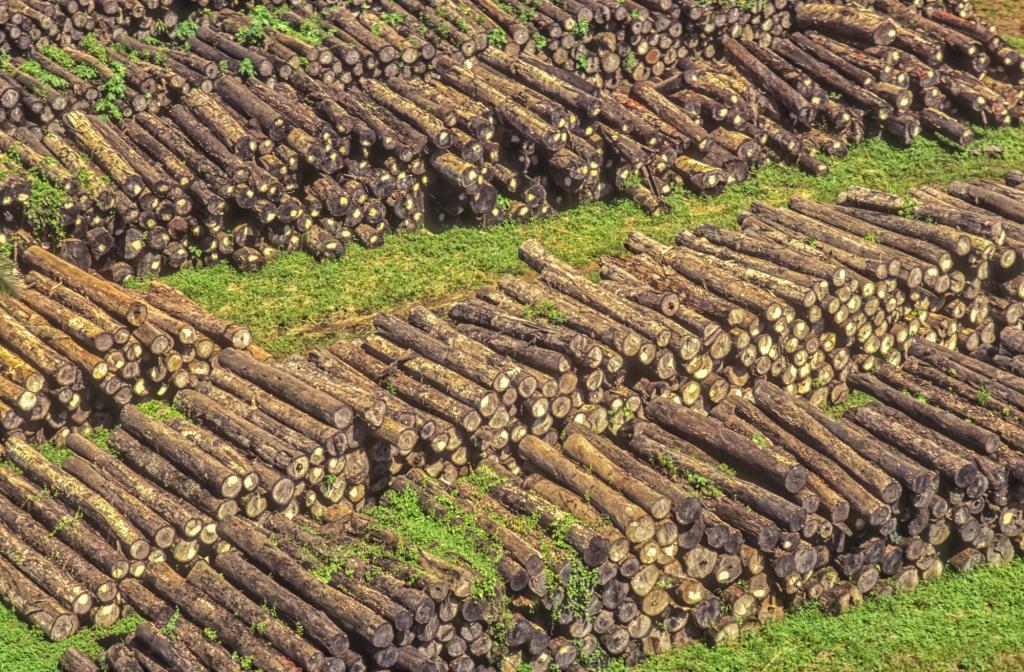
The third lesson is the importance of finance. This includes both providing dedicated finance for efforts to protect and restore forests as well as working to reduce or eliminate the global financial incentives that drive deforestation. Significant additional finance for forests was mobilized at COP 26, but more will be required. Reversing the financial incentive for deforestation, however, will be even more challenging. For many forest owners and users, it remains more immediately profitable to cut down their trees rather than to maintain them. Part of the challenge will be increasing transparency in supply chains so that financial markets can properly respond to the risk of deforestation-linked production.
Reversing the tide of deforestation will not be easy, as the past fifty years have shown. But with growing public pressure to address climate change and biodiversity loss, and by learning from the mistakes of the past, we might still have a chance.
Works Consulted
Boucher, D., Roquemore, S., & Fitzhugh, E. (2013). Brazil’s success in reducing deforestation. Tropical Conservation Science, 6(3), 426–445. https://journals.sagepub.com/doi/10.1177/194008291300600308
Donofrio, S., Maguire, P., Myers, K., Daley, C., & Lin, K. (2021). State of the voluntary carbon markets 2021. Forest Trends. https://www.forest-trends.org/publications/state-of-the-voluntary-carbon-markets-2021/
Engfeldt, L. (2009). From Stockholm to Johannesburg and beyond. Swedish Ministry for Foreign Affairs.
Food and Agriculture Organization & United Nations Environment Programme. (2020). The state of the world’s forests 2020: Forests, biodiversity and people. https://www.fao.org/documents/card/en/c/ca8642en
Government of the United Kingdom. (2021). World leaders summit on ‘Action on forests and land use.’ Policy paper. https://www.gov.uk/government/publications/cop26-world-leaders-summit-on-action-on-forests-and-land-use-2-november-2021/world-leaders-summit-on-action-on-forests-and-land-use
Humphreys, D. (2005). The elusive quest for a global forests convention. Review of European Community & International Environmental Law, 14(1), 1–10. https://onlinelibrary.wiley.com/doi/10.1111/j.1467-9388.2005.00418.x
Kappen, G., Kastner, E., Kurth, T., Puetz, J., Reinhardt, A., & Soininen, J. (2020). The staggering value of forests—and how to save them. Boston Consulting Group. https://www.bcg.com/publications/2020/the-staggering-value-of-forests-and-how-to-save-them
Lambin, E. F., Gibbs, H. K., Heilmayr, R., Carlson, K. M., Fleck, L. C., Garrett, R. D., le Polain de Waroux, Y., McDermott, C. L., McLaughlin, D., Newton, P., Nolte, C., Pacheco, P., Rausch, L. L., Streck, C., Thorlakson, T., & Walker, N. F. (2018). The role of supply-chain initiatives in reducing deforestation. Nature Climate Change, 8(2), 109–116. https://www.nature.com/articles/s41558-017-0061-1
Mukpo, A. (2021). As COP15 approaches, “30 by 30” becomes a conservation battleground. Mongabay. https://news.mongabay.com/2021/08/as-cop15-approaches-30-by-30-becomes-a-conservation-battleground/
Powers, R. (2018). The Overstory. W. W. Norton.
Poynton, S. (2014). Wilmar’s “no deforestation” goal could revolutionise food production. The Guardian. https://www.theguardian.com/sustainable-business/wilmar-no-deforestation-commitment-food-production
Ritchie, H. (2021). Cutting down forests: What are the drivers of deforestation? https://ourworldindata.org/what-are-drivers-deforestation
Ritchie, H., & Roser, M. (2021). Forests and deforestation. https://ourworldindata.org/forests-and-deforestation
World Resources Institute. (2021). Global Forest Review. https://research.wri.org/gfr/global-forest-review
WWF. (2021). Discover tropical rainforests. https://wwf.panda.org/discover/our_focus/forests_practice/importance_forests/tropical_rainforest/
Additional downloads
You might also be interested in
The Legacies of the Stockholm Conference
Fifty years after Stockholm, we face a triple planetary crisis of climate change, nature and biodiversity loss, and pollution.
Border Carbon Adjustments: Trinidad and Tobago country report
This report consolidates, analyzes, and presents views and perspectives of stakeholders from Trinidad and Tobago on border carbon adjustment (BCA) schemes to contribute to the global debate on BCA good practices.
Global Dialogue on Border Carbon Adjustments: The case of Brazil
This report consolidates, analyzes, and presents the views and perspectives of stakeholders from Brazil on border carbon adjustment (BCA) schemes to contribute to the global debate on BCA good practices.
Web of resilience
Pakistan's development model has still not recognised the limits of the natural environment and the damage it would cause, if violated, to the sustainability of development and to the health and well-being of its population. Pakistan’s environment journey began with Stockholm Declaration in 1972. A delegation led by Nusrat Bhutto represented the country at the Stockholm meeting, resulting in the establishment of the Urban Affairs Division (UAD), the precursor of today’s Ministry of Climate Change. In setting the country’s environmental agenda, we were inspired by the Stockholm Principles, but in reality, we have mostly ignored them for the last five decades.
